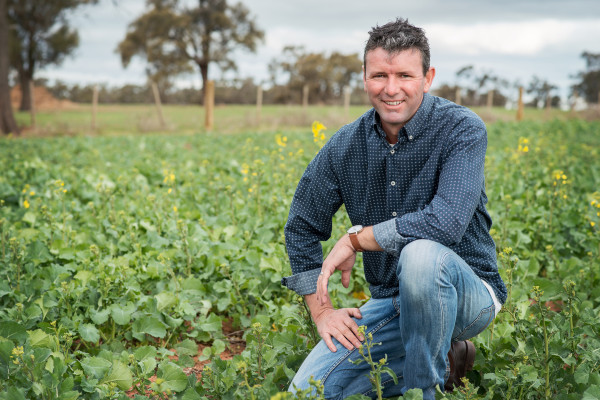QUAMBATOOK farmer and former VFF grains group president Brett Hosking says it’s great news the Chinese Government has withdrawn tariffs from Australian-grown barley, but estimates the impact of the 80 per cent tariffs has cost growers about $50 per tonne during the time they were in force.
“To put that in perspective, barley crops in the past two years have been in excess of 10 million tonnes, closer to 15 million tonnes – they are some pretty big years to be wiping $50 a tonne off,” Mr Hosking said.
“We’re talking three-quarters of a billion dollars out of rural communities – that money ultimately goes into growers’ pockets who live in rural communities and spend their money in rural communities.
“So it is less money for the footy club, the church, the Lions club, and all of those little groups that make up communities.”
In a statement released on Friday, China’s Ministry of Commerce said it had ruled that “in view of the changes in the market situation of barley in China, it is no longer necessary to continue to impose anti-dumping duties and countervailing duties on the imported barley originating in Australia”.
The tariffs were introduced in May 2020 after an 18-month investigation by the Chinese Ministry of Commerce alleging that dumping and subsidisation by Australia had occurred.
Australia then referred China to the World Trade Organisation, but suspended the appeal this year when Beijing agreed to review the tariffs.
Mr Hosking said the export relationship between Australia and China was extremely important for grain growers, with the Chinese market offering a real advantage from a geographical perspective.
“We’re one of the closest southern hemisphere grain-producing countries. China is a big barley producer themselves, but they are a northern hemisphere country, so that are just wrapping up their harvest right now, and they are going to have a whole heap of barley coming in off that, and they are going to consume it pretty quickly.
“And then they are going to get to the end of this year around November-December, and that’s when the Australian harvest will be coming online,” Mr Hosking said.
“The other thing that is a real advantage is that because we’ve had such a strong relationship with China for so many years, we’re actually producing barley in a style and varieties that actually suit the Chinese palate.
“If we can reinstate our barley production along those lines – producing a product that they want and continuing to pay a premium for that – then we will have a really prosperous relationship for both countries going forward.”
Member for Mallee Anne Webster called for China lift other export tariffs, such as the wine tariff, which was referred to the WTO in 2021.
“Now that the barley tariffs have been resolved, the attention must turn to Australia wine exports,” Dr Webster said.
“There will be many wine grape growers and producers in the Mallee waiting for that decision in order to recommence their exports to China.”







